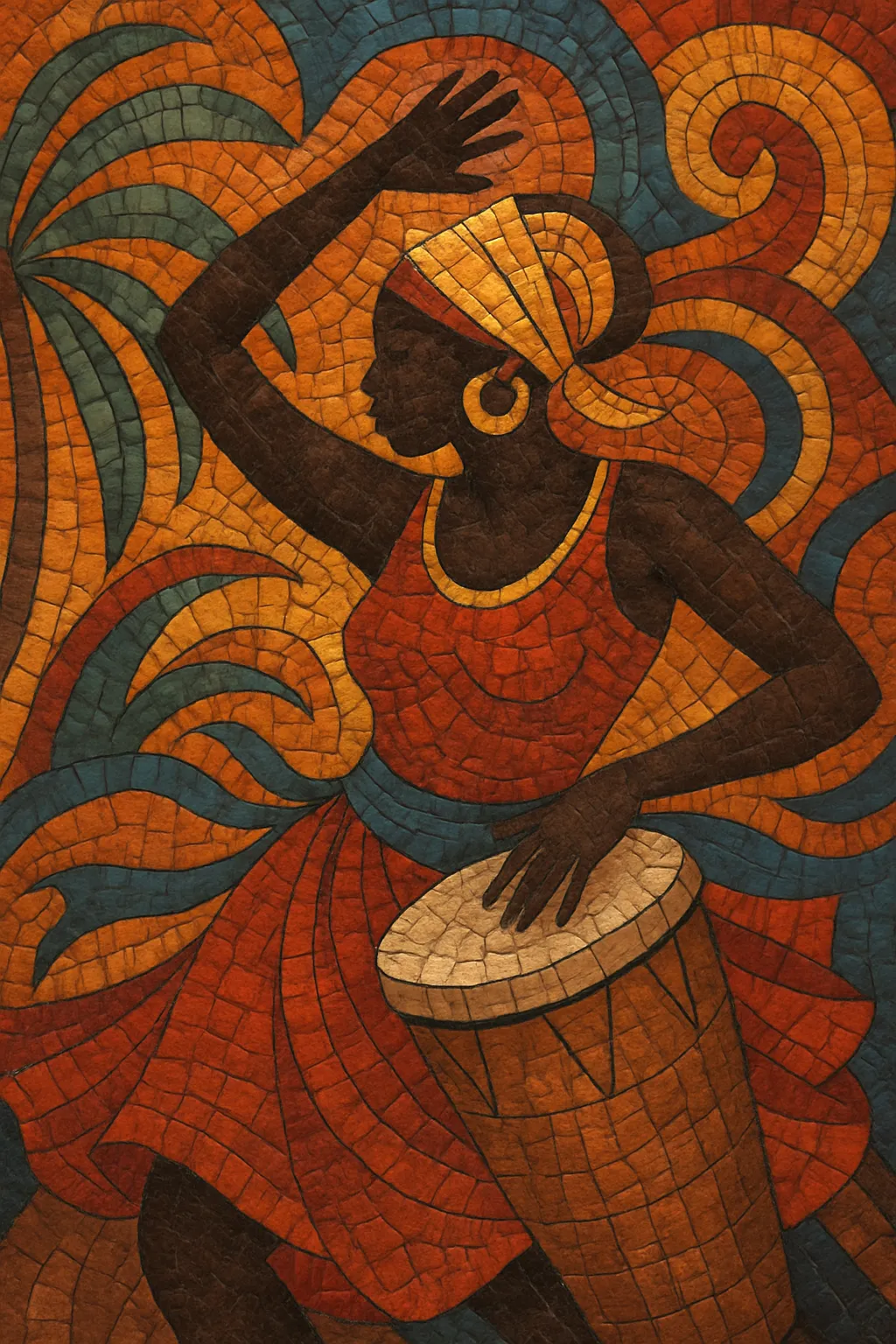Axé is a high-energy popular music from Salvador, Bahia, that fuses Afro-Brazilian and Caribbean rhythms with pop and rock songcraft. Designed for massive Carnival parades, it pairs large percussion ensembles with bright electric guitars, brass hooks, and call-and-response vocals to drive dancing crowds along the trio elétrico (truck-mounted sound stages).
Grounded in afoxê/ijexá and samba-reggae grooves, axé favors upbeat major-key melodies, anthemic choruses, and lyrics celebrating joy, love, summer, Afro-Bahian pride, and the collective ecstasy of the street party. Its sound is at once percussive and melodic: layered surdos, timbales, repiniques, and atabaques interlock beneath catchy horn lines and pop arrangements built to move tens of thousands of revelers.
Axé emerged in the mid-to-late 1980s in Salvador, Bahia, during the explosive Carnival scene around the trio elétrico. Artists and bands blended local Afro-Bahian rhythmic traditions—especially afoxê/ijexá and the bloco-afro–driven samba-reggae—with the drive of frevo and marchinha (Carnival marches), plus influences from reggae, calypso, soca, rock, and Brazilian pop/MPB. The aim was music that could both sing on radio and physically propel massive street crowds.
Percussion ensembles from blocos afro such as Olodum and the production vision of creators around the Carnival circuit shaped axé’s rhythmic DNA, while electric guitars, keyboards, and horn sections carried the hooks. The result was a distinctly Bahian sound: Afro-Atlantic, festive, and irresistibly danceable.
The genre went national in the early 1990s, led by hit records and TV/road exposure during Carnival season. Daniela Mercury’s "O Canto da Cidade" (1992) signaled axé’s arrival across Brazil, soon followed by stars and bands such as Chiclete com Banana, Banda Eva, Asa de Águia, Araketu, and Timbalada. Salvador’s Carnival became a showcase beamed to the entire country, helping axé dominate summer charts and shape the image of Brazilian festivity.
In the 2000s, axé consolidated as a mainstream institution. Artists like Ivete Sangalo and Claudia Leitte expanded its stadium-ready pop profile, while production adopted sleeker arrangements and elements from contemporary pop and electronic music. Parallel Bahian scenes cross-pollinated with axé, spawning related styles (e.g., pagodão) and continual hitmaking around Carnival and off-season micaretas (out-of-season Carnival events).
Today, axé remains a core sound of Bahia’s cultural identity and a perennial force in Brazil’s summer pop, with classic anthems and new hybrids reaffirming its role as the soundtrack of Carnival.


